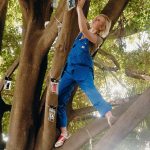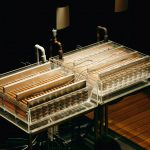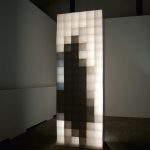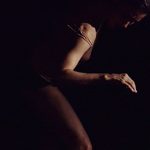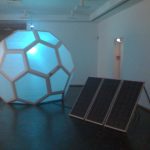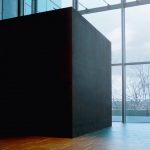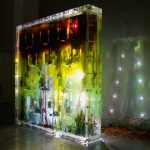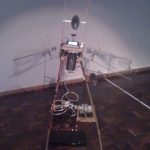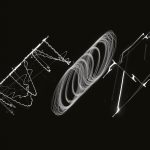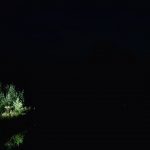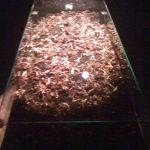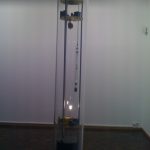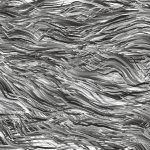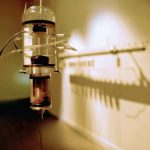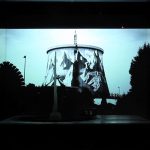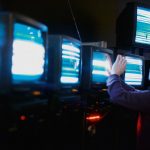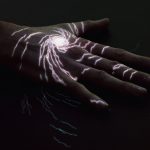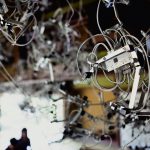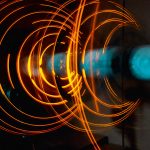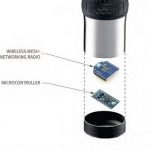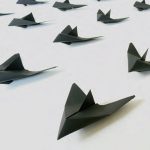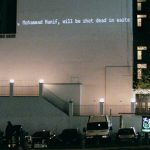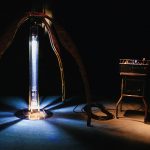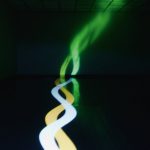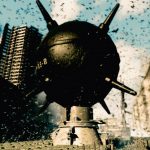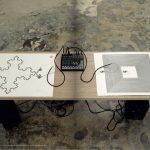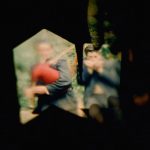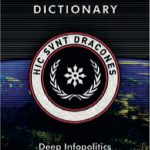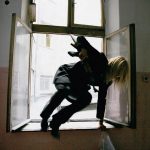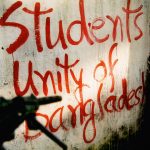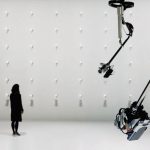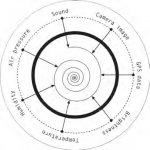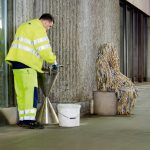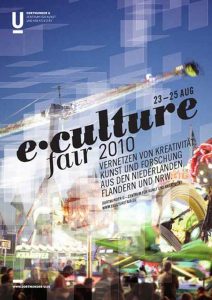ISEA2010 Art Event Overview
ISEA2010: [Overview] [Venues] [Presentations] [Workshops] [Art Events] [Gallery]
-
Art Exhibition:
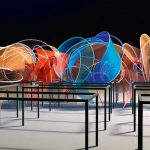 Synchronous Objects, reproduced
Synchronous Objects, reproduced
[Shaw]
(Art Exhibition) (Installation Art) (Performances) (Performance Art)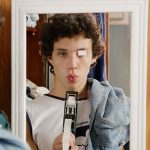 Ressaca/Hangover
Ressaca/Hangover
[Vianna]
(Art Exhibition) (Interactive Monitor-Based) (Video / Animation Installation)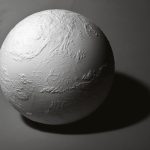 A Planetary Order (Terrestrial Clou...
A Planetary Order (Terrestrial Clou...
[Callanan]
(Art Exhibition) (Sculptural Objects) (Installation Art)-
Heavy Matter
Curator(s)/Director(s)/Producer(s):
-
At the turn of the 21st century, New Media has become a matter of course and the technology of electronic data processing is constantly being perfected. The promise that all spheres of life will be digitalized and made immaterial seems to have been fulfilled. Just how immaterial is data really? Does it not carry a certain amount of weight, after all? What role does the subject play in the virtual data space? In this exhibition, we will question the arrival of the virtual future and, as the exhibition title suggests, expose the immaterial as “Heavy Matter”. The question of whether New Media can access reality is explored in the form of complex processes of transformation, embodiment, sound and localization.
By purloining scientific explanatory models for artistic purposes, applying extrasensory methods and devising poetic processes, the complex virtual world will become accessible and will be, literally, made tangible. Heavy does matter: objectively, physically and financially. Matter is an autonomous (disruptive) factor between transmitter and receiver. “Heavy Matter” has been developed by members of the teaching staff and students of the Academy of Media Ar... [Read more]
-
Exchange Emergences is a joint-showcase of Coded Cultures festival and Japan Media Arts Festival. The international partner project Coded Cultures/Japan Media Arts Festival shows the latest works of Japanese, Austrian and Slovenian artists at the Dortmunder Kunstverein. [Read more]
Exchange Emergences
Trust Exhibition:
We are glad to host the exhibition TRUST in the spaces of HartwareMedienKunstVerein (HMKV) at Dortmunder U as the pre-opening event of ISEA 2010 RUHR.
The exhibition contains works by fourteen international artists and deals with the trust that we put in people, in media and in machines–out of a desire for security, for entertainment, or for comfort.
TRUST is made possible by the generous support of the Kunststiftung NRW, the Art Foundation of North Rhine Westphalia. We are grateful to the Foundation’s general secretary, Regina Wyrwoll, for the confidence and interest that she has given to this project. TRUST takes place in the framework of ISEA 2010 RUHR, the 16th edition of the most important conference for media art worldwide, which happens annually, each time in a different part of the world. We can confidently say that we are proud to have brought ISEA to Germany for the first time. The symposium is officially hosted by medienwerk.nrw, an association of different media art institutions in North Rhine Westphalia, which was founded exactly 10 years ago, ... [Read more]
Trust in Rugged Terrain
Curator(s)/Director(s)/Producer(s):
The exhibition TRUST presents works from fourteen artists and artist groups that focus on different aspects of trust. The works make it possible to grapple with the contemporary meaning of trust and to explore its boundaries.
We distinguish between different forms of trust such as personal trust (in other people), system trust (in institutions and technical systems) and media trust (in images, media and presentation techniques). Communication and social action are unthinkable without trust – it forms the foundation for the functioning of complex societies, especially when they are not driven by the threat of violence. Trust is the retainer and the goodwill that we bring to a relationship: it embodies the expectation that the other will behave in a reliable manner although no explicit assurances have been given. Placing trust in someone means leaving him or her with a precious gift in the hope that it will be carefully treated and eventually returned.
... [Read more]
E-Culture Fair:
- E-Culture Fair Day 3
- The E-Culture Fair 2010 will be showcasing innovative projects in the fields of media art, creative industry, research and education. It is the first step of an envisaged long-term co-operation between three partners: Virtueel Platform of Amsterdam, the Netherlands, BAM – Flemish Institute for visual, audiovisual and media art of Ghent, Flanders, and medienwerk.nrw of North Rhine-Westphalia, Germany, in affiliation with ecce – european centre for creative economy, organised by Hartware MedienKunstVerein. In line with previous events held regularly since 2000 in the Netherlands, the E-Culture Fair 2010 is being presented for the first time in Germany as an ISEA2010 RUHR co-operation project.
In an exhibition and trade fair environment – in workshops and through live presentations – international artists and creatives showcase their latest works and anticipate future collaborations in the context of electronic culture. The intention is to display the current state of artistic reflection, and to debate social as well as cultural transformations and various creative applications in the digital field.
Programme:
- Speakers: Dr. Inke Arns (HMKV... [Read more]
-
Virtueel Platform – Projects from the Netherlands
-
The Dutch contributions to the E-Culture Fair 2010 offer a varied collection of ways in which digital culture plays out in the real world. Together they demonstrate that e-culture does not only happen in digital on-screen spaces, but has intimately woven itself into many of the ways we do things in our work and the rest of our lives. A few examples: “UPLabs” (Urban Park Laboratory) explores the near future of the public park by inserting public entry digital services into the Westerpark of Amsterdam. “CityShapes” allows people to build life-size toy castles with huge (virtual) building blocks on the Leonie-ReygersTerrasse in front of the Dortmunder U. “Fritzing” allows technical amateurs to design and test their electronic circuits on screen until they work, and then gives them a blueprint to make them real. These designs can, of course, be published and improved by further users. The “Instructables Restaurant” is an open source/do-it-yourself restaurant that can be started from scratch anywhere. It is continuously improved and reiterated in an open design practice. Social media and mobile internet are the driving forces in the development of this hybrid mix that... [Read more]
- https://www.flickr.com/photos/v-p/albums/72157624817422274/
-
The Flemish participants in the E-Culture Fair 2010 present research projects, tools, methods, applications and installations at the intersection of culture and new media technology. These crossover projects originate from quite different backgrounds, domains and disciplines such as cultural heritage and ways to categorize cultural and leisure information (“Cultuurlab”), generative art applications (“Nodebox”, “City in a Bottle”), interactive cinematic narratives and digital distribution (“Where is Gary?”), education and elearning (“Fundels”), artistic reflections on digital and analogue phenomena of seeing (De Werktank), music, gaming, design, ecology… What they have in common is that they explore social and cultural potentials of technology, going from multi-touch technology (e.g. “Social Spaces”), to omni-directional video techniques (Crew), RFID, interactive visualizations of the internet (“DarkMatr”) and of course in several cases networked technology (“Musescore”).
With:
- ARCHIE–mobile interactive museum guide
- Expertise Centre for Digital Media (Hasselt University)
- Behind the Horizon De ... [Read more]
-
The contributions to the E-Culture Fair 2010 from North Rhine-Westphalia are characterised by a broad range of themes and approaches: the spectrum of showcased works ranges from artistic reflection (“The Moon Goose Experiment”) and possibilities for archiving and communicating media art (“Netzspannung.org & Medienfluss”) to artistic applications (“CubeBrowser”) and cultural criticism (“BigBrotherAwards”). A topic that is approached by three projects in varying fashions is participation: With interesting techniques pertaining to urban renewal and environmental sustainability, “Botanoadopt” and “Prototypen://” trace the intersection of physical space and digital networked technology. In a workshop, the Folkwang Museum Essen presents new opportunities created by Web 2.0 media for cultural education, through which it is now possible, regardless of place and time, for initiatives such as Cultural Commons to address a global audience.
With:
- BigBrotherAwards FoeBuD e.V.
- Botanoadopt 431art.org
- CubeBrowser Ludwig Zeller
- Cultural Education in Web 2.0 Folkwang Museum Essen
- Lab for Media... [Read more]
-
E-Culture Fair 2010 Closing Party
Bringing the E-Culture Fair 2010 to a close, large interactive video projections controlled by visitors can be seen in the sizeable audiovisual outdoor installation of MediaLAB (Hogeschool van Amsterdam, NL) on the facade of the office building, next to the Dortmunder U. MediaLAB’s “U-Turm Project” was developed in collaboration with video artist Matthias Oostrik, Beam Systems, and Virtueel Platform. It combines interactive, large-scale projections with music and video art. The silhouettes of every visitor stepping onto one of the four stages on the Leonie-Reygers-Terrasse are recorded and projected onto a window of the facade. Through their movements, players can steer their images in different directions. The closing party expands at 23:00h when the E-Culture Fair 2010 opens the vaulted cellar under the Dortmunder U, jointly organised with ISEA2010 RUHR, providing an opportunity to get to know each other in a relaxed atmosphere, accompanied by electronic music.
The closing party expanded at 23:00h when the E-Culture Fair 2010 opened the vaulted cellar under the Dortmunder U, jointly organized with ISE... [Read more]
ECF 2010 & ISEA2010 RUHR – Electronic Beats
Medienwerk – Projects from North Rhine-Westphalia
Curator(s)/Director(s)/Producer(s):
Website:
Flickr Album
BAM – Projects from Flanders
Curator(s)/Director(s)/Producer(s):
Performances:
-
Audiovisual Pilots
-
Ei Wada presents his performance “Braun Tube Jazz Band” at the beginning of the club night.
- i8u (qc/ca) i8u’s audio art can be qualified as soundsculpture. It reveals powerful, opaque and complex sound environments where analogue and digital meet. She performs a set with humming drones enhanced by virtually inaudible acute frequencies.
- Halldór Úlfarsson (is) — Eyes are Speaking Eyes are Speaking A pair of light-sensitive glasses and light bulbs mounted on microphone stands are features of this performance. The tinted lenses react to the brightness of the bulbs, which are in turn influenced by the sound. Experience Halldór Úlfarsson’s instrument, the halldoro phone, played by Hildur Guðnadóttir in concert on Tuesday, Halldór Úlfarsson will also speak about his instrument at the panel “Building Musical Instruments”.
- evala (jp) The cutting-edge sound of evala is characterized by crystalline clarity and digital precision without ever losing sight of danceability. Supported by the Japan Foundation.
- Paul Prudence (gb) — ryNTH “ryNTH” uses live sound analysis to generate synthae... [Read more]
-
At the beginning of the club night participants of the “Experimental Electronics” workshop present their results in a short performance. Ei Wada presents his performance “Braun Tube Jazz Band” at the beginning of the club night.
- döbereiner & morimoto (de/nl/jp) These artists experiment with sound synthesis methods whose sonic possibilities are explored in an audiovisual live setting. The resulting sonorities are roughtextured microstructures visualised in wavelike forms.
- Infinite Livez (gb) — Solo live performance Infinite Livez performs a rare one-man show. Expect a mixture of experimental noise, stream of consciousness rapping and live beat-making from the London-born emcee.
- One Man Nation (sg) — When I Was Young I Was Easily Amused, But Now It Is All, The Same, And The Same One Man Nation’s work is best described as a “performance that transmits a deep narrative feeling of geopolitical disenchantment, ingrained into dark textures”. This disenchantment reveals itself on more levels than purely narrative; it is exorcised the use of every part of his body as a whole.
- Tarek Atoui (lb... [Read more]
Delicate Folk
Screening:
Concerts and Sound Events:
-
Folkwang University of the Arts, Essen-Werden (ISEA2010 Day of Sound)
Curator(s)/Director(s)/Producer(s):
-
On Sun 22 August 2010 the ICEM (Institute for Computer Music and Electronic Media) at the Folkwang University, Essen, DE, presented the Day of Sound with concerts, performances and sound art installations. Selected project submissions from the ISEA2010 RUHR Call for Proposals was presented alongside works produced in the ICEM studios.
A full day totally dedicated to electronic music during which the roots of instruments, compositional principles and sound structures of the electronic sound world will be presented. Live electronics are being generated and combined in an interplay with direct, well-rehearsed sound worlds. Barely perceptible auditory and visual microcosms flow through each other and sound resonances become symbolic. It will be collaged and looped, dismembered, reassembled, distorted and abstracted with text, sound and image. Modularised technical equipment and classical instruments in electronic garb are used. And, lastly, a one of a kind sound machine triumphs with enormous stertorous and subharmonic frequencies.
Text with image (PDF) [Read more] -
 … and the walls threw back echoes...
… and the walls threw back echoes...
[Hinde] [Vogel]
(Performances) (Concert - Audio/Visual) (Performance Art)
Konzerthaus Dortmund
St. Maximilian-Kirche, Duisburg-Ruhrort
Public Events:

